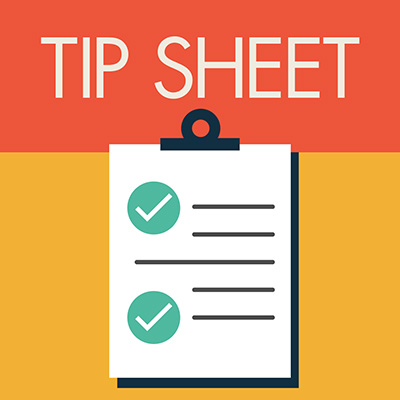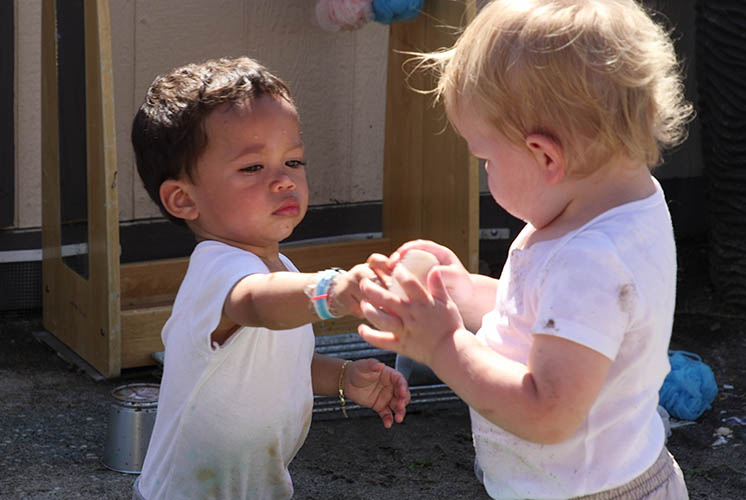 Adults often find children's behaviors interesting and engaging. There are also behaviors that adults sometimes find challenging. For example, infants fuss or cry despite the adults' efforts to comfort them or have different feeding or sleeping schedules. Toddlers sometimes hit, bite, fall to the floor, cry, kick, whine, or say "no." Some preschoolers argue or fight over toys, struggle to follow directions, or become overly aggressive as they play. Toddlers and preschoolers may also have moments of energetic play, move quickly from activity to activity, or withdraw and not want to participate in activities. Often, these behaviors are developmentally appropriate, typical, and normal—and they change with support and social, emotional, and cognitive development.
Adults often find children's behaviors interesting and engaging. There are also behaviors that adults sometimes find challenging. For example, infants fuss or cry despite the adults' efforts to comfort them or have different feeding or sleeping schedules. Toddlers sometimes hit, bite, fall to the floor, cry, kick, whine, or say "no." Some preschoolers argue or fight over toys, struggle to follow directions, or become overly aggressive as they play. Toddlers and preschoolers may also have moments of energetic play, move quickly from activity to activity, or withdraw and not want to participate in activities. Often, these behaviors are developmentally appropriate, typical, and normal—and they change with support and social, emotional, and cognitive development.
Some children need more help managing strong emotions or disruptive behaviors. If they don't receive help early, children's behaviors can negatively impact their social, emotional, and cognitive development. Programs can support children who need such help by developing and using an Individual Support Plan (ISP). For further information, see the tip sheet on developing individual support plans.
Strategies
All behavior is a form of communication. Every behavior can be described by its form and function. Form is the behavior used to communicate. Young children let adults know their wants and needs through their behavior long before they have words. They give us “cues” to help us understand what they are trying to communicate. Function is the reason for or purpose of the behavior, from the child’s perspective.
Programs can support education staff and families by using the Center on the Social and Emotional Foundations for Early Learning (CSEFEL) Pyramid Model as a framework for understanding children's behavior. Many strategies can support healthy social and emotional development and prevent or reduce behaviors that could negatively affect children's development and learning. Education managers, child development specialists, home-based supervisors, mental health consultants, and coaches can help education staff use these and other strategies in their work with children and families.
- Learn how parents and families expect their children to behave and express themselves. Talk with families about how expectations may be different in different settings (e.g., home, group care, group socializations) and how to support children's behaviors in these settings.
- Talk and wonder with parents, and other adults who know the child, about what the purpose (function) of the child's behavior might be.
- Observe children's behavior (form) and pay attention to their cues. Cues help adults understand what children are trying to communicate with their behavior (function). When adults understand children's behavior, they can respond in ways that meet children's needs.
- Use appropriate strategies to understand and communicate with children who are dual language learners (DLLs).
- Use resources such as the Planned Language Approach (PLA) Gathering and Using Language Information That Families Share to learn about children's language backgrounds. This can inform appropriate adult-child interaction and communication strategies.
- Children who are DLLs may initially rely on behavior to express themselves, especially in settings and situations where staff do not speak the child's home language. Refer to PLA resources under Strategies that Support DLLs.
- If staff speak the child's home language, they can help the child use that language to communicate while scaffolding their understanding and use of English. See PLA's Big 5 for All: Oral Language and Vocabulary.
- Use daily routines to interact and develop positive relationships with each child.
- Use predictable routines during the day to help children feel safe and secure.
- Design learning environments that are responsive to children's individual developmental needs and the needs of the whole group.
- Adjust interactions to match children's temperaments or needs.
- Help children learn to self-regulate or calm themselves.
- Help children feel a sense of control by allowing them to make choices throughout the day.
- Help children express themselves and solve problems appropriately.
- Help children identify their own emotions and the emotions of others. Talk about the link between feelings and facial expressions and gestures.
- Identify additional supports or expertise, or start a referral process, if a behavior:
- Is not typical for a child's age and stage of development
- Continues to be intense or ongoing
- Interferes with the child's ability to explore and learn
Support Developmental Behaviors When They Become Challenging
 Many behaviors that are appropriate for children's ages and stages of development are challenging for adults. It is important that adults do not respond angrily or harshly when these behaviors occur. Instead, education staff and families can work together to support children's positive behaviors using the strategies listed below.
Many behaviors that are appropriate for children's ages and stages of development are challenging for adults. It is important that adults do not respond angrily or harshly when these behaviors occur. Instead, education staff and families can work together to support children's positive behaviors using the strategies listed below.
- Toddlers and young preschoolers are beginning to learn to share and take turns. In group settings (e.g., classrooms, family child care homes, socializations):
- Provide more than one of the most popular toys to reduce fighting over the same toy
- Protect children's favorite items; not all items need to be shared (e.g., loveys and other objects children bring from home)
- Help preschool children learn to take turns (e.g., model turn-taking, prompt children to problem-solve turn-taking challenges, and offer turn-taking solutions such as flipping a coin, using a timer, "rock, paper, scissors," and waiting patiently)
- Provide separate areas for active and quiet play. This keeps active play from interfering with other children's need for quiet time.
- Teach children words they can use to ask for help in their home languages and English. Consider teaching gestures (such as sign language) to help children express themselves, especially when they can't verbalize the words they need. For example, show a child how to sign "play" so she can communicate, "I want to play with you." When children don't have the words to make their needs known, they may communicate their frustration by biting, pushing, hitting, falling on the floor, crying, kicking, and screaming.
Mental Health Consultation
As required in the Head Start Program Performance Standards, programs must use mental health consultants. Mental health consultants work with staff and families to support children's mental health (i.e., social and emotional development and well-being). They provide a variety of services to support individual children and families (e.g., child- and family-centered consultation) as well as the overall program (e.g., programmatic consultation).
Considerations for Planning and Programming
Program staff can use the questions below to identify and respond to children's behaviors.
- How do staff individualize supports to meet each child's social and emotional needs?
- Who do education staff go to for support when there are concerns about a child's behavior or social and emotional development?
- How does the program respond when a child's behaviors appear to make it difficult for the child to have positive relationships with others, regulate emotions, or explore and learn?
- How does the program respond when staff or family members bring up concerns about a child's social and emotional development?
- How does the program support staff in having conversations with families early in the process when they are concerned about a child's behavior or social and emotional development?
- What resources does the program have to help respond to concerns about children's behaviors?
- How does the program provide timely and effective supports for staff and families when they are concerned about a child?
- How does the program learn more about a child's previous behaviors or physical or mental health background?
Head Start Program Performance Standards
- Teaching and the learning environment, 45 CFR §1302.31:
- (b)(1)(I)–(iv) Effective teaching practices
- (b)(1)(2) Dual language learners
- (c)(1)–(2) Learning environment
- (d) Materials and space for learning
- Education in home-based programs, 45 CRF §1302.35:
- (c)(1)–(5) Home visit experiences
- (e)(1)–(3) Group socializations
- (f) Screening and assessment
- Child mental health and social and emotional well-being, 45 CFR §1302.45:
- (a) Wellness promotion
- (b) Mental health consultants
- Family support services for health, nutrition, and mental health, 45 CFR §1302.46:
- (b)(1)(iv) Opportunities to discuss with staff and identify issues related to child mental health and social and emotional well-being
Resources
Infant and Toddler
- Infant Toddler Temperament Tool (IT3)
- Rocking and Rolling—It Takes Two: The Role of Co-Regulation in Building Self-Regulation Skills
- Coping with Crying in Babies and Toddlers
Preschool
- 15-minute In-service Suites
- Dual Language Learners with Challenging Behaviors
Birth to 5
- 15-minute In-service Suite: Behavior Has Meaning
- Head Start Early Learning Outcomes Framework (ELOF) Effective Practice Guides
- Mental Health Consultation in Your Program
- The National Center for Pyramid Model Innovations (NCPMI)
« Go to Head Start Tip Sheets for Grantee Planning
Read more:
Resource Type: Article
National Centers: Early Childhood Development, Teaching and Learning
Last Updated: December 23, 2024